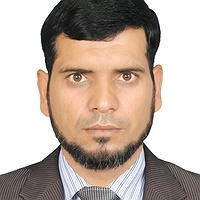Sustainable Approaches for Plant Conservation under Emerging Pollutants Volume II
A special issue of Sustainability (ISSN 2071-1050). This special issue belongs to the section "Pollution Prevention, Mitigation and Sustainability".
Deadline for manuscript submissions: closed (31 July 2023) | Viewed by 8728
Special Issue Editors
Interests: plant conservation under emerging pollutants; phytoremediation of emerging pollutants; integrated and sustainable approaches; bioremediation; biofertilizers; composting from organic wastes
Special Issues, Collections and Topics in MDPI journals
Interests: biofertilizer for sustainable agriculture under normal and abiotic stress conditions; biogeochemistry and remediation of heavy-metal-contaminated soils
Special Issue Information
Dear Colleagues,
This Special Issue will focus on the use of sustainable approaches for plant conservation under emerging pollutant stress. Due to urbanization and industrialization, various emerging pollutants have come to the attention of researchers around the world. These pollutants include heavy metals, antibiotics, personal care products, pesticides, microplastics, and various others. These pollutants have detrimental effects on the growth, physiological, and biochemical parameters of plants. Various studies have reported the use of organic and inorganic amendments to protect plants under the abovementioned abiotic stresses. However, these testimonials are mostly under controlled conditions. In addition, the elucidation of mechanistic coping approaches is lacking in the recent literature. Therefore, the present Special Issue will focus on the integrated novel approaches (biological, physical, and chemical) used for plant conservation under emerging pollutants. The Special Issue will also include studies involving the mechanistic elucidation of approaches used to cope with these stresses and under natural conditions. Co-contamination is a recent emerging issue which needs special attention. Reports on sustainable integrated approaches involving the abatement of co-contamination are also of interest for this Special Issue.
Dr. Allah Ditta
Dr. Muhammad Imtiaz
Dr. Sajid Mehmood
Guest Editors
Manuscript Submission Information
Manuscripts should be submitted online at www.mdpi.com by registering and logging in to this website. Once you are registered, click here to go to the submission form. Manuscripts can be submitted until the deadline. All submissions that pass pre-check are peer-reviewed. Accepted papers will be published continuously in the journal (as soon as accepted) and will be listed together on the special issue website. Research articles, review articles as well as short communications are invited. For planned papers, a title and short abstract (about 100 words) can be sent to the Editorial Office for announcement on this website.
Submitted manuscripts should not have been published previously, nor be under consideration for publication elsewhere (except conference proceedings papers). All manuscripts are thoroughly refereed through a single-blind peer-review process. A guide for authors and other relevant information for submission of manuscripts is available on the Instructions for Authors page. Sustainability is an international peer-reviewed open access semimonthly journal published by MDPI.
Please visit the Instructions for Authors page before submitting a manuscript. The Article Processing Charge (APC) for publication in this open access journal is 2400 CHF (Swiss Francs). Submitted papers should be well formatted and use good English. Authors may use MDPI's English editing service prior to publication or during author revisions.
Keywords
- heavy metals
- antibiotic stress
- organic amendments
- heavy metal-resistant PGPR
- bioremediation
- phytoremediation
- biofertilizers
- nanomaterials
- biochar
- zeolites
- co-contamination
- integrated approaches to combat different pollutants







